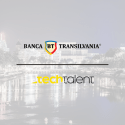In the rapidly evolving digital age, the importance of cybersecurity in software development has skyrocketed, becoming a critical concern. As the spectrum of cyber threats expands and evolves, encompassing everything from sophisticated malware to intricate data breaches, the need for advanced and proactive security measures has never been more pressing. Traditional approaches are often insufficient in the face of these modern threats, necessitating a shift towards more robust and innovative cybersecurity strategies. This necessity has transformed the integration of advanced cybersecurity techniques from a luxury to an imperative within the software development process. In the following, we aim to shed light on the essential role of sophisticated cybersecurity practices throughout the software development lifecycle, emphasizing the growing dependence on digital solutions and the significant risks associated with securing sensitive data and systems. So, join us as we explore the vital importance of implementing advanced cybersecurity techniques to effectively combat and mitigate the complex cyber threats that characterize today's digital landscape.
Proactive Threat Modeling
The first step in enhancing cybersecurity within software development, involves the adoption of proactive threat modeling. This crucial process includes implementing structured methodologies such as STRIDE or PASTA, which are designed to systematically identify and address potential security threats right at the onset of the development process. By integrating such models, developers can anticipate and mitigate a wide range of vulnerabilities and attack vectors, ensuring that security considerations are ingrained in the software from the very beginning.
The true strength of threat modeling lies not only in its initial deployment, but also in its continuous evolution and enhancement. Regular updates to threat models are essential to keep pace with the ever-changing landscape of cybersecurity threats. This continuous threat analysis helps in recognizing new vulnerabilities and responding to emerging threats. By staying vigilant and keeping threat models up-to-date, developers can maintain a robust defense posture throughout the software development lifecycle, adapting to new challenges as they arise.
Secure Development Frameworks
Adopting recognized security frameworks such as Microsoft’s Security Development Lifecycle (SDL) or NIST’s Secure Software Development Framework (SSDF) is a key step in enhancing cybersecurity in software development. These frameworks provide comprehensive guidelines and best practices, ensuring a consistent approach to security throughout the software development lifecycle. They help streamline the security process, making sure that every development phase is infused with robust security measures to minimize vulnerabilities.
At the same time, developing custom security frameworks tailored to a business’s specific needs and risks offers a more focused approach. Custom frameworks address unique challenges and requirements, aligning security strategies more closely with the company's operational environment and business goals. This bespoke approach ensures that security measures are not just standard, but are finely tuned to offer maximum protection specific to the company's digital ecosystem.
Advanced Static and Dynamic Analysis
Interactive Application Security Testing (IAST) blends the advantages of Static Application Security Testing (SAST) and Dynamic Application Security Testing (DAST) for a more thorough vulnerability detection. This method allows simultaneous analysis of both the static code and its dynamic execution, providing a comprehensive view of security issues. By integrating these approaches, IAST helps bridge the gap between early development stages and post-deployment, enhancing overall software security.
Runtime Application Self-Protection (RASP) is another critical tool in advanced security analysis. RASP offers real-time threat detection and response within active applications, monitoring behaviour and reacting immediately to any threats. This real-time defence is particularly vital for applications with internet exposure, as it significantly reduces the chances of exploitation and data breaches.
AI and Machine Learning in Security
Machine learning has become an essential element in modern cybersecurity, especially for anomaly detection. These algorithms excel at identifying unusual patterns indicative of security breaches, a task that's particularly challenging in complex systems. This proactive stance in security enables early detection and mitigation of threats, significantly enhancing overall protection. Machine learning's ability to sift through vast data sets and identify risks is critical for maintaining robust security in today's digital landscape.
Complementing this, artificial intelligence (AI) is reshaping security operations through automation, as AI excels in tasks such as rapid vulnerability scanning and efficient incident response. By handling these tasks with unprecedented speed and accuracy, AI-driven security solutions not only strengthen defences, but also allow human security teams to dedicate their focus to more strategic and nuanced cybersecurity aspects. This synergy of AI and human expertise is key to advancing security in an increasingly complex digital world.
DevSecOps Integration
In DevSecOps, integrating security into Continuous Continuous Deployment pipelines is essential. This integration ensures regular, automated security checks, which are key for the early detection and resolution of issues during the development phase. By embedding these security checks within CI/CD workflows, the approach not only maintains software integrity and safety from inception to deployment, but also streamlines the development process, providing consistent protection against vulnerabilities.
Furthermore, DevSecOps places a strong emphasis on collaborative security, encouraging a culture where developers, operations, and security teams work closely, sharing the responsibility for security. This collaborative model leads to a more comprehensive and effective security strategy, as it combines the expertise of various teams. Such an approach speeds up response times to security issues and greatly improves the overall security posture of the software.
Microservices and Container Security
Securing containerized applications is an aspect of microservices architecture that must be given significant attention, involving essential practices such as container scanning for vulnerability detection and secure orchestration to manage containers effectively. These steps are crucial in ensuring the safety of containerized components, which are often key elements in complex microservices systems. By implementing these security measures, the integrity and reliability of the entire application are maintained, safeguarding against various threats.
Additionally, adopting security patterns specifically designed for microservices, such as service mesh security layers, is also a vital step. These patterns, designed for distributed and independent service architectures, incorporate crucial security features, including efficient communication management and service-level authentication. Adopting this targeted security approach is fundamental in protecting each individual component within the system, thereby significantly strengthening the overall security of the software system.
Zero Trust Architecture
Implementing Zero Trust principles represents a major shift in network security. Under this model, no user or device, whether internal or external, is automatically trusted. Each access request is rigorously authenticated and authorized, ensuring a highly secure environment through continuous verification. This approach is crucial in a landscape where threats can arise from anywhere, challenging the adequacy of traditional perimeter-based security models.
Going forward, we must also mention the principle of Least Privilege Access, that represents a key component of the Zero Trust model. It involves enforcing access policies that limit users and systems to only the essential levels of access needed for their functions. This minimization of granted privileges across all systems and services significantly reduces the risk of unauthorized access or breaches. Implementing least privilege access has proven to be an efficient strategy in enhancing security and minimizing the potential attack surface within a company’s network.
Advanced Encryption Techniques
In advanced data protection, End-to-End Encryption plays an important role, ensuring both data integrity and confidentiality. This method is employed to maintain data securely encrypted throughout its entire journey, from sender to recipient, with decryption only possible by the intended receiver. In today's digital landscape, characterized by the paramount importance of secure communication and data sharing, this approach is indispensable. It effectively prevents unauthorized access and eavesdropping at any point during the data's transmission, strengthening data security and privacy.
Furthermore, it's essential to anticipate future threats, which is where Quantum-Resistant Encryption comes into play. As quantum computing technology advances, traditional encryption methods may become vulnerable. Quantum-resistant encryption aims to develop cryptographic techniques that can withstand the computational power of quantum computers, ensuring the long-term security of sensitive data. By proactively exploring and adopting quantum-resistant encryption methods, companies can stay ahead of evolving threats and maintain data security in a rapidly changing technological landscape.
Blockchain for Enhanced Security
Blockchain technology offers innovative solutions to enhance security across various domains. One such application is in identity verification, where blockchain establishes a secure, decentralized ledger of verified identities, reducing the risks of identity theft and fraud while giving individuals control over their personal information. Additionally, blockchain plays a crucial role in securing transactions, particularly in digital currencies and finance, providing transparency, traceability, and tamper resistance. Its versatility extends to supply chain security, healthcare data management, and more. By integrating blockchain into security practices, businesses can harness its transformative potential, fostering trust, transparency, and heightened security in the digital age.
Conclusion
The imperative for robust cybersecurity in software development is clear in our digital age, where cyber threats are constantly evolving. The integration of proactive threat modeling, secure development frameworks, advanced analytical techniques, and the strategic use of AI and machine learning, combined with DevSecOps practices, microservices and container security, Zero Trust architecture, and advanced encryption methods, are essential. These practices, coupled with the innovative application of blockchain technology, form a comprehensive defence strategy. As cyber threats continue to advance, staying ahead requires a dynamic, collaborative approach, emphasizing continuous adaptation and education to safeguard digital assets and maintain the integrity of our digital ecosystem.



